Pumpkins are a classic crop that many gardeners love to grow for Halloween decor or to use in delicious pumpkin baked goods. However, pumpkins can struggle with pests, diseases, and competition from weeds. One excellent organic solution is companion planting.
Companion planting is the process of strategically planting different vegetables, herbs, and flowers together in a garden space. Certain plants actually benefit each other when grown side by side. The right companion plants can help deter common pumpkin pests, attract beneficial pollinators, improve soil nutrient levels, and much more.
Benefits of Companion Planting
There are many advantages to incorporating companion plants in your pumpkin patch:
Pest Control
Certain plants naturally emit odors that can repel destructive insect pests. For example, radishes deter cucumber beetles, flea beetles, squash bugs and other insects that damage pumpkin vines and leaves. Marigolds also have a strong scent that deters whiteflies, aphids, cabbage moth larvae, and even deer. Companion planting is an organic way to reduce pest problems without using harmful chemicals.
Attracting Beneficial Insects
By including plants that offer nectar and pollen, you can draw beneficial insects like ladybugs, lacewings, hoverflies, and predatory wasps. These beneficial predators feast on common garden pests like aphids, cabbage worms, squash bugs, and beetle larvae. Also, companion plants with bright colored blooms will attract bees, butterflies and other pollinators. Improved pollination leads to better fruit set and larger pumpkin yields.
Improving Soil Health
Some companion plants help suppress weeds, retain soil moisture, and even add nutrients to the soil. Low growing companions act as living mulch to prevent water evaporation. And dynamic nutrient accumulators like comfrey pull up minerals from deep in the soil and transport them to the top layers where roots can access them. Legumes like beans and peas fix nitrogen from the air into the soil. And plants with deep tap roots like daikon radishes aerate and loosen the earth.
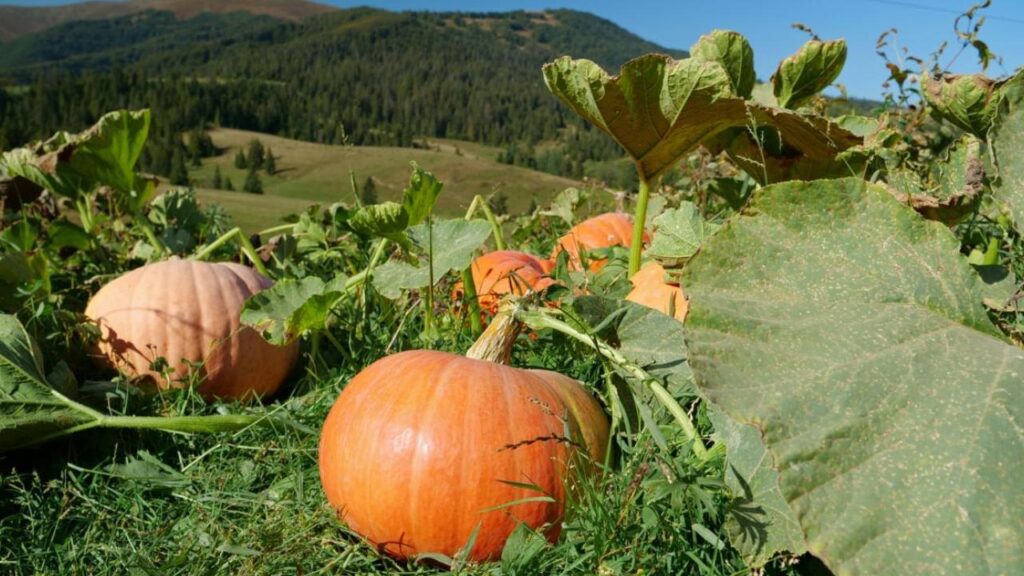
Natural Trellising
The sprawling vines of pumpkins often spread out many feet across the garden. Tall companions like corn or sunflowers can provide natural stakes for pumpkin vines to climb up vertically. This saves space and prevents the heavy fruits from sitting directly on damp soil. Other trellising companions include climbing beans, cereal rye, or tall brassica crops surrounded by lower growing pumpkin vines.
Efficient Use of Garden Space
By carefully selecting companion plants that mature at different times, you can maximize production from every square foot of the garden. Fast growing radishes and lettuces can grow and be harvested before the large leaves of pumpkin vines take over. And longer season companions like cabbage and brussels sprouts will continue growing after the pumpkins are done.
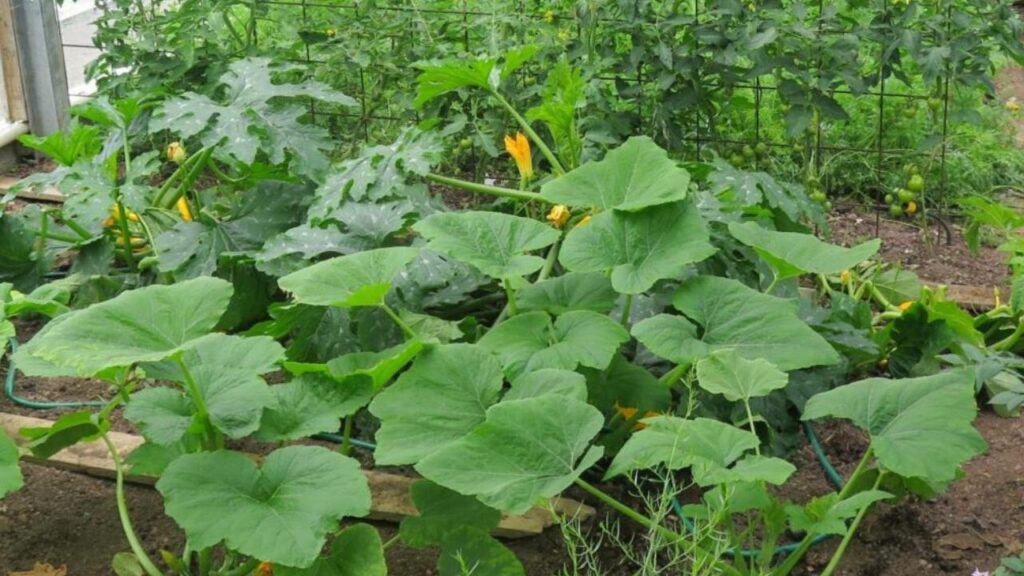
Healthier Plants
All of these benefits combined result in stronger, more vigorous pumpkin plants. The pumpkin vines are less stressed by pests, weeds, and infertile soil when grown with beneficial companion plants. Healthy pumpkin plants are better equipped to produce large, abundant fruit free of disease and rot issues.
Best Companion Plants for Pumpkins
Here are some of the top companion planting options for pumpkins:
Pole Beans
Grow climbing pole bean varieties like ‘Kentucky Wonder’ or ‘Scarlet Runner’ on trellises situated on the north side of the pumpkin patch. These fast growing legumes fix nitrogen from the air into the soil through a process called rhizobium symbiosis. The nitrogen gets deposited into the earth and enriches the soil, fueling growth of nitrogen-loving pumpkin vines.
The vining beans also provide dappled shade and vertical support for the spreading pumpkin stems once the corn has been harvested. And since beans flower at the same time as pumpkins, they draw pollinating bees, honeybees, and other beneficial insects to improve the fruit set. Pole beans are an ideal multi-purpose companion.
Corn
The classic companion for pumpkins or any type of winter squash is corn. The heavy vining fruits can rest atop the tall corn foliage without sitting directly on damp soil where they may rot. Corn stalks provide the perfect natural trellis for wandering pumpkin vines.
Corn attracts predators like ladybugs, lacewings, hoverflies, parasitic wasps, tachinid flies, and flower flies. These beneficial insects feast on common garden pests like aphids, cabbage worms, cucumber beetles, squash bugs, and beetle larvae. With corn as a companion, you get built-in pest control.
Since corn is wind pollinated, there is no competition for pollinators between the two crops. And corn’s large leaves offer protection from wind and provide dappled light conditions. Pumpkins grown under corn have higher and earlier yields. Just be sure to provide plenty of nitrogen for both heavy feeding plants.
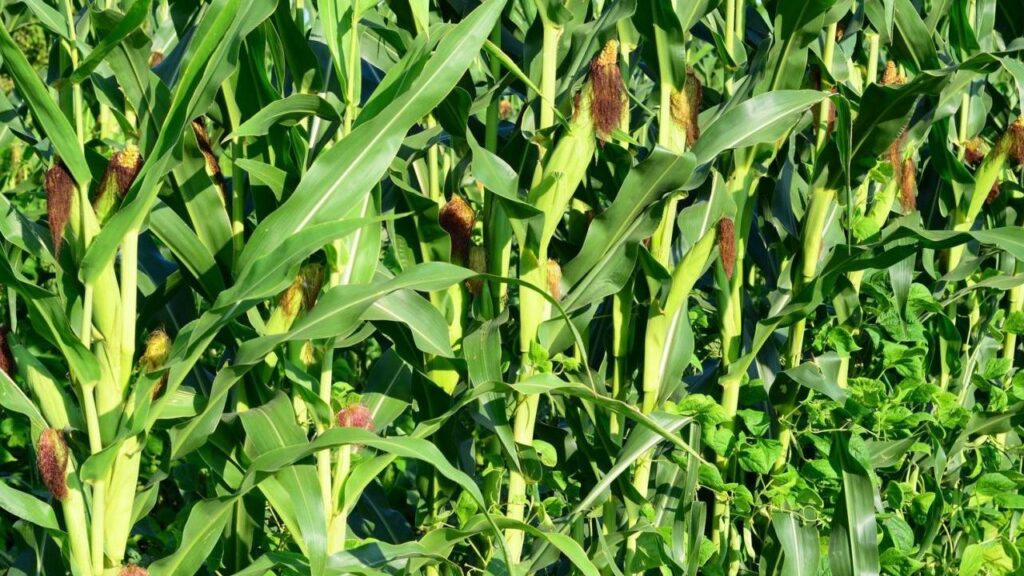
Radishes
Fast growing radish varieties can be interplanted with young pumpkin seedlings. Choose quick maturing spring radishes or winter daikon types that will be harvested before pumpkin vines start to rapidly spread. The radishes will be pulled up by mid-summer, avoiding competition.
Daikon radishes have long taproots that help break up and aerate compacted soil. And after harvesting radishes, the decaying roots add valuable organic matter to the earth. Radishes also repel cucumber beetles, squash bugs, borers, flea beetles, root maggots, and root knot nematodes.
Interplanting quick growing radishes lets you make use of space while pumpkins are small. And offers pest control benefits long after the radishes are gone.
Marigolds
Marigolds are a versatile companion that serves many functions. The pungent scent given off by marigold flowers repels a wide array of garden pests. Whiteflies, aphids, squash bugs, cabbage loopers, Japanese beetles, snails, slugs, and rabbits are all deterred by this colorful companion.
Marigolds also encourage beneficial insects like ladybugs, hoverflies, lacewings, parasitic mini wasps, and spider mite destroyers. Plant marigolds throughout the garden and these “good bugs” will stick around to feed on pests.
Plus marigolds bloom brightly to attract bees, butterflies, and other pollinators. More pollinator visits mean better fruit set on those pumpkin blossoms. And certain marigolds like ‘Lemon Gem’ produce root exudates that suppress nematodes in the soil.
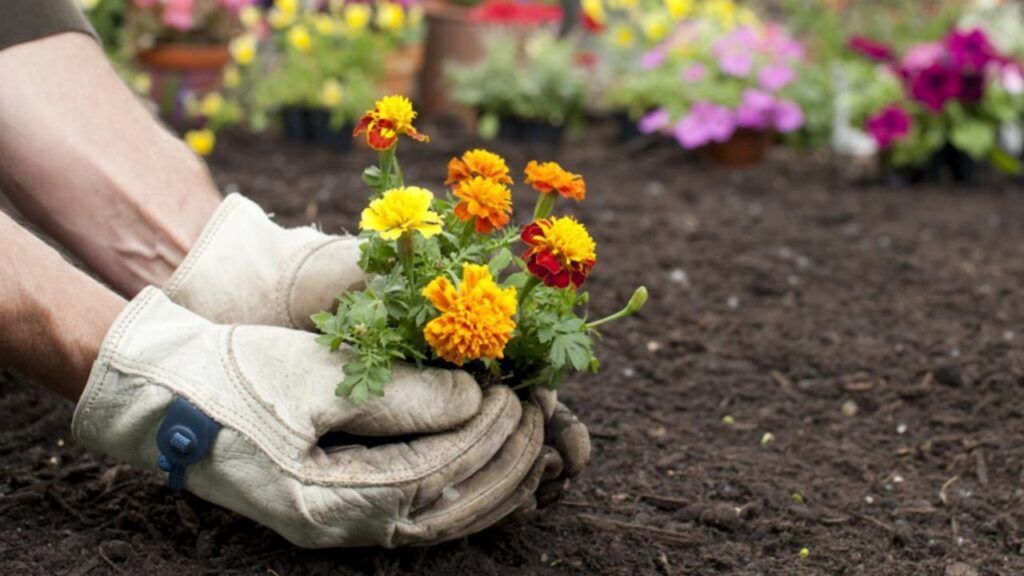
For best results, transplant young marigold plants like ‘Sweet Cream’ or ‘French’ around the outer edges of the pumpkin patch. The scent will permeate the garden, driving away insects looking to munch on your pumpkin vines and leaves.
Borage
Also known as starflower, borage is beloved by pollinators for producing hundreds of small, vibrant blue flowers. Each flower has a drop of nourishing nectar that attracts bees, butterflies, hummingbirds, and beneficial wasps to the garden.
More pollinator visits equals better fruit production on the pumpkin vines. Since borage readily self-seeds, it will come back year after year with no effort on your part. The cucumber-flavored edible flowers can also be used to dress up salads, desserts, and drinks.
Basil
This flavorful culinary herb has showy flower spikes that attract many beneficial insects. Growing different types of basil will lure hoverflies, predatory wasps, bees, parasitic mini wasps, and tachinid flies. These hungry predators control damaging pests like tomato hornworms, cabbage loopers, whiteflies, mosquitoes, squash bugs, and aphids.
The flowers of Thai basil, lemon basil, cinnamon basil, and African blue basil are especially attractive. Pinch off flower heads regularly to encourage even more blossoms. And be sure to harvest leaves often for a tasty seasoning. The potent aroma of basil helps confuse pests that use scent to locate host plants.
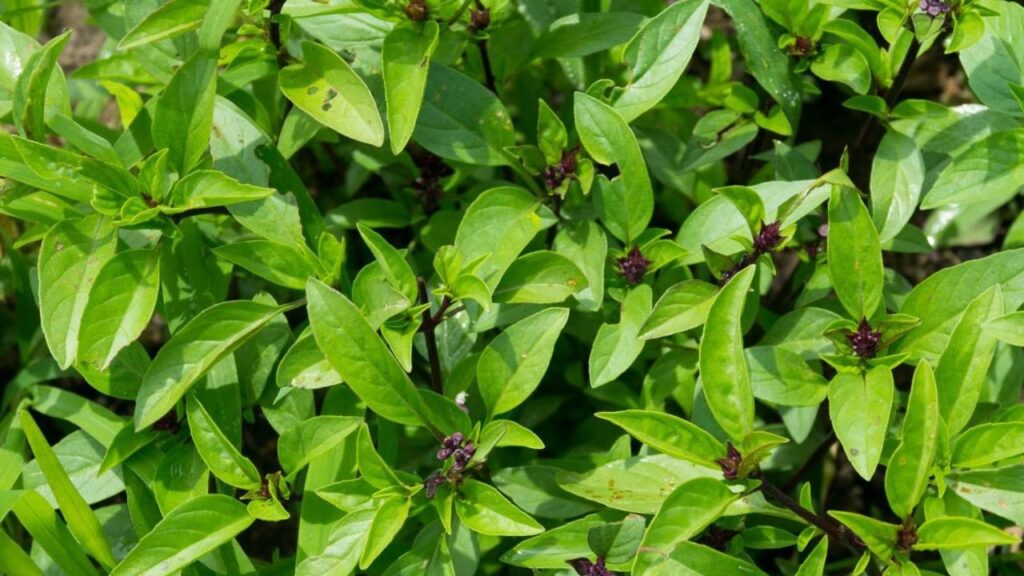
Petunias
A garden favorite, petunias come in a rainbow of colors and add beauty to any garden space. The trumpet-shaped blooms of single, double, trailing, and wave petunias will lure in many beneficial insects. Ladybugs, lacewings, hoverflies, parasitic mini wasps, and syrphid flies all visit petunias.
These predators and pollinators help control pest populations while also pollinating pumpkins. Mounded, spreading varieties are ideal for borders around a pumpkin patch. Petunias are most effective when planted in drifts of at least 3-5 plants. Choose heat and rain resistant varieties like ‘Supertunia Vista Bubblegum’ for best performance through summer.
Four O’Clocks
Also known as Marvel of Peru, four o’clocks earn their name by opening their sweetly fragrant, trumpet-shaped flowers at dusk when night pollinators are active. But these plants offer pest protection during daylight hours too.
Four o’clocks release a chemical into the soil that helps deter Japanese beetles and mask the scent of host plants. As a bonus, the flowers come in a variety of colors like pink, red, yellow, and white to brighten up the garden from spring until frost. Four o’clocks readily reseed every year for no maintenance beauty and pest control.
Nasturtiums
Edible nasturtiums have a spicy, peppery flavor and the flowers make colorful garnishes in salads. In the garden, nasturtiums provide ground cover to shade soil, prevent weeds, and deter pests like whiteflies, squash bugs, and striped cucumber beetles.
Nasturtiums produce copious amounts of nectar-rich blooms that draw in bees, hummingbirds, and butterflies to improve pumpkin pollination. As a bonus, the strong fragrance of nasturtiums can also confuse pests. Deer, rabbits, and other animals turn away from the pungent odor.
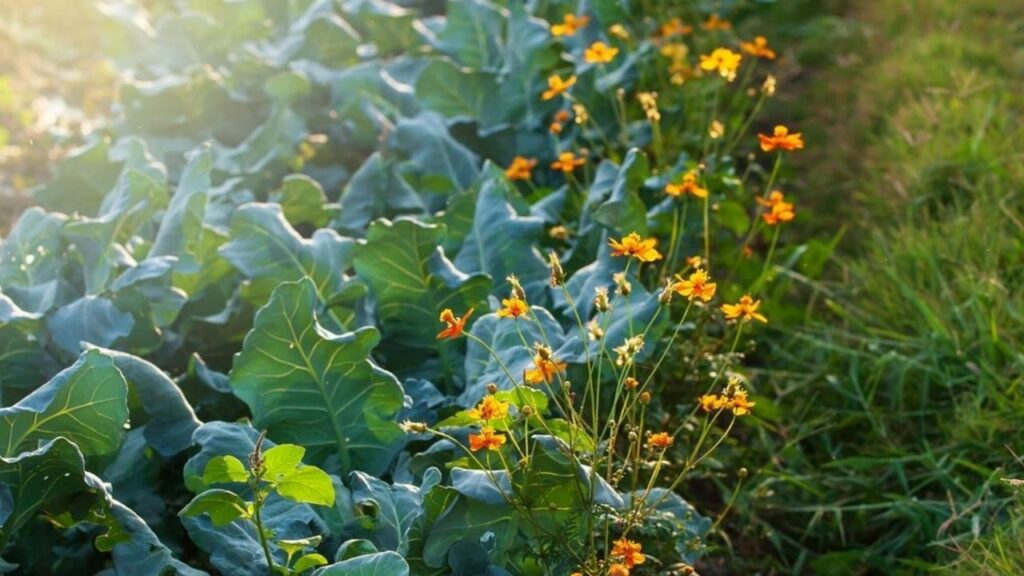
For the most benefits, plant mounding or trailing nasturtiums like ‘Empress of India’ or ‘Jewel Mix’ around the edges of your pumpkin patch and between corn stalks.
Tips for Successful Companion Planting
Follow these guidelines as you plan out your pumpkin patch companion plants:
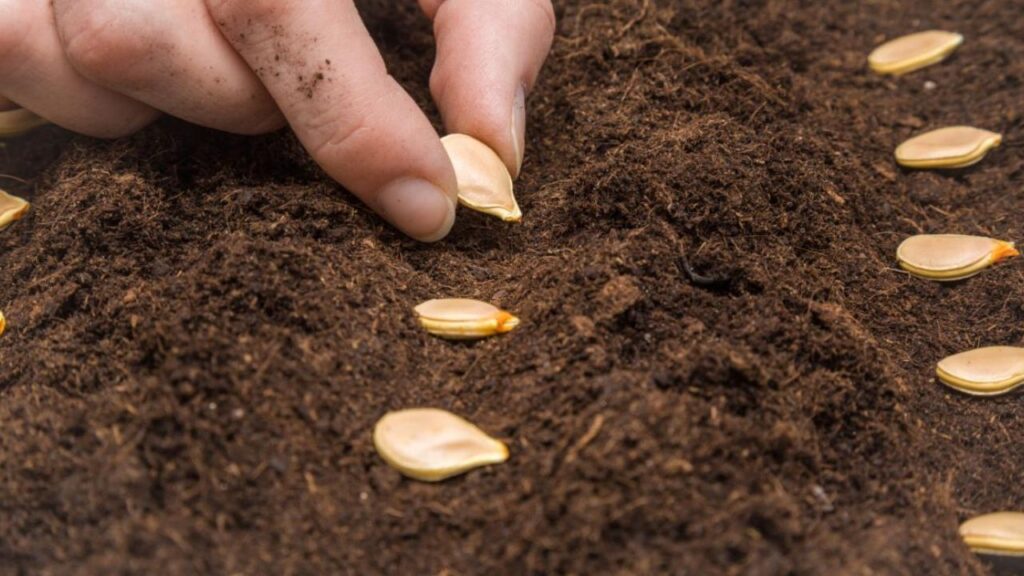
- Mix up companion plants throughout the garden space rather than in just one area. This helps deter pests, improves pollination, and prevents disease transmission between closely grouped plants.
- Pay attention to sun requirements and plant taller companions like corn or sunflowers on the north side. This prevents them from shading out low growing plants that need full sun.
- Give pumpkins and spreading companions like squash, melons, cucumbers, and beans plenty of room between rows. Crowding leads to reduced air circulation and more disease issues.
- Include flowering herbs and flowers to attract beneficial insects for natural pest control. Clover, calendula, yarrow, parsley, cilantro, thyme, and dill are other great choices.
- Use fast growing companions like lettuce, spinach, arugula, and mustard greens around the outer edges of the pumpkin patch. They mature quickly before the large vines spread.
- Interplant determinate bush bean varieties right in with the pumpkin vines. These low growers won’t compete for light and space like taller pole beans.
- Use corn or tall brassicas as natural trellises on the ends of pumpkin rows. This keeps the heavy pumpkin fruits off the damp soil and saves space.
- Include dynamic nutrient accumulators like comfrey, dandelions, and chamomile to pull up minerals from deep in the soil and transport them to the top layers.
- Plant nasturtiums, radishes, or marigolds as trap crops throughout the pumpkin patch. They lure pests away from the main crop and reduce damage to the pumpkins.
- Always practice crop rotation from season to season. Don’t plant pumpkins or other cucurbits in the same spot two years in a row. This prevents disease buildup in the soil.
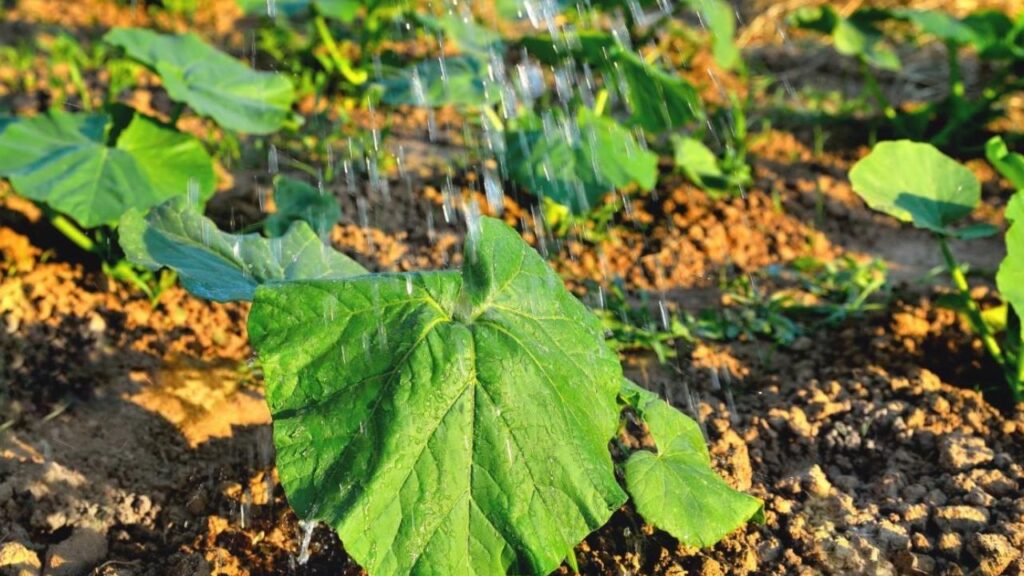
What Not to Plant Near Pumpkins
When planning your pumpkin companion plants, there are certain crops that should be avoided nearby:
- Potatoes – Potatoes and pumpkins are close relatives, so they share many of the same diseases. Planting them together increases the likelihood of issues like blight.
- Raspberries & Blackberries – These canes often have overwintering squash vine borers. Don’t give the pests easy access to move onto the pumpkin vines.
- Melons & Cucumbers – While in the same plant family, these cucurbit crops will compete for nutrients with pumpkins. And they also attract more pests like cucumber beetles.
- Cabbage Family Crops – Kale, broccoli, cauliflower, and Brussels sprouts tend to harbor more cabbage worms and aphids which may spread to pumpkins.
Sample Companion Planting Garden Plans
Here are a couple example layouts showcasing effective pumpkin companion plantings:
Layout #1 – Efficient Intercropping
This plan efficiently intercrops quick growing plants between the spreading pumpkin vines.
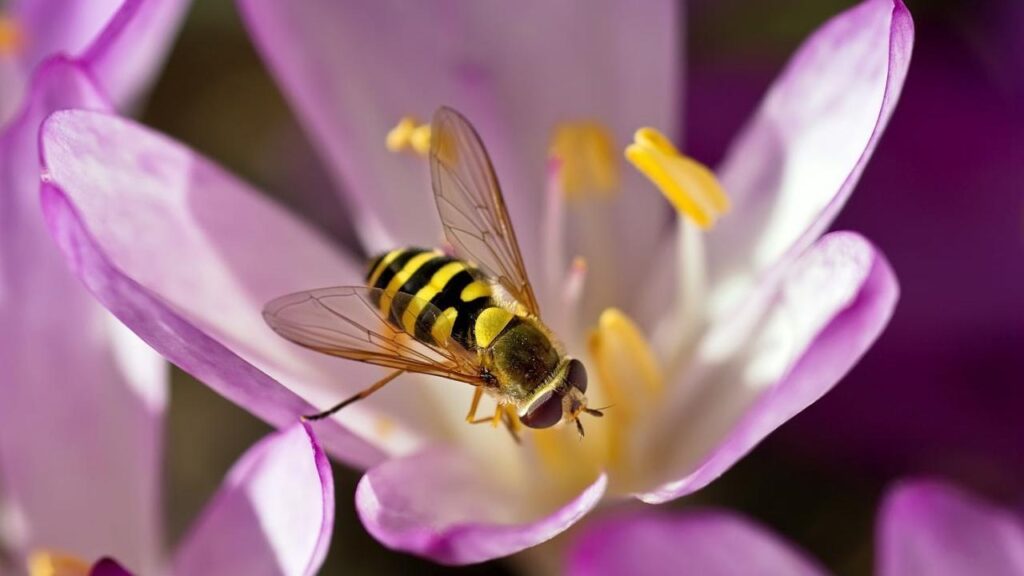
- Grow pumpkins in rows spaced 5-6 feet apart for plenty of space as vines expand. Amend soil with compost to provide nutrients.
- Alternate marigold and nasturtium plants around the outer pumpkin row edges. These bright flowers deter pests like cucumber beetles, aphids, and squash bugs.
- Plant radish seeds between the young pumpkin seedlings. Choose quick maturing varieties that will be harvested before pumpkin vines spread. Radishes repel soil-borne pests.
- Bush bean cultivars can also be planted in the spaces between pumpkin plants. Opt for determinate, compact varieties that won’t compete for light and space. Beans fix nitrogen in soil.
- Include corn spaced 1-2 feet apart along the pumpkin rows. The sturdy stalks support sprawling pumpkin vines and conserve garden space.
- Fill empty spots around the pumpkin patch with petunias, zinnias, and other flowering plants. They attract pollinators for a better fruit set.
- Use vertical space by trellising pole beans, cucumbers, and peas on the north side of the garden. This takes advantage of limited garden space.
Layout #2 – Border Planting
This plan surrounds pumpkins with beneficial border plants to optimize pollination and pest control.
- Plant pumpkins in center rows spaced at least 5 feet apart. Prepare soil well with compost and fertilizer to feed heavy feeding vines.
- Border the pumpkin patch withcalibrachoa, petunias, or other small blooming plants. They bring in pollinators and add color.
- Include four o’clocks and marigolds around the edges to deter pests like squash bugs, cucumber beetles, and spider mites.
- Use corn stalks, sunflowers, or poles at the end of pumpkin rows to support trailing vines. This keeps fruits clean and contained.
- Put vertical frames on the north side for cucumbers, pole beans, and vining peas. These companions utilize the background space.
- Interplant lettuces, spinach, arugula, and other greens around pumpkins while plants are young. Harvest them before pumpkins vine out.
- Radish seedlings can be planted in a grid pattern throughout the patch to repel beetles, borers, and other pests.
- Fill in empty spaces with bush beans for nitrogen fixation. Choose low growing determinate varieties.
- On the outer margins, plant onions, garlic, and herbs like parsley, basil, and oregano to deter insects.
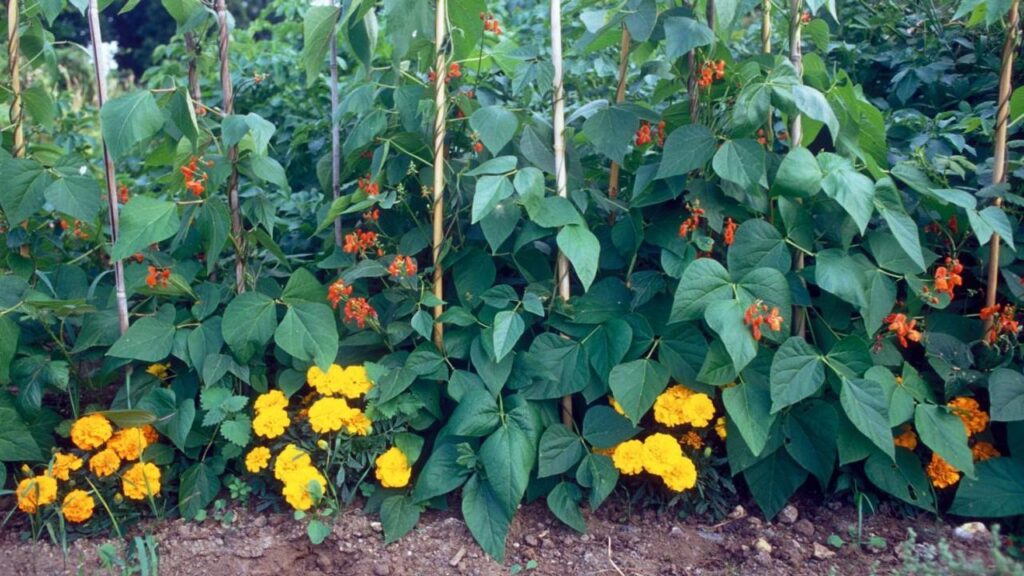
As you can see, there are many possibilities for combining pumpkins with beneficial companion plants. Pay attention to the plants that grow best in your particular climate and soil conditions. Companion planting takes some planning, but the time invested results in a healthier, more productive garden!
Conclusion
Companion planting with pumpkins helps deter destructive pests, improves pollination, enhances soil nutrients, and allows efficient use of garden space. By combining science-backed companion plants with your pumpkins, you can reduce pest damage, increase yields, and grow large, robust pumpkins naturally without relying on harsh chemical solutions.
Some of the best companion options include pole beans, corn, radishes, marigolds, nasturtiums, borage, oregano, basil, petunias, and four o’clocks. Be sure to avoid planting pumpkins near potatoes, berries, cucumbers, or cabbage family crops.
Pay attention to proper spacing, sunlight needs, and harvesting times when laying out your pumpkin patch. Mix up companions throughout the garden, use trellising plants strategically, and include plenty of flowers for pollinators. With some thoughtful companion planting, you can enjoy a thriving pumpkin crop and make the most of your garden space!

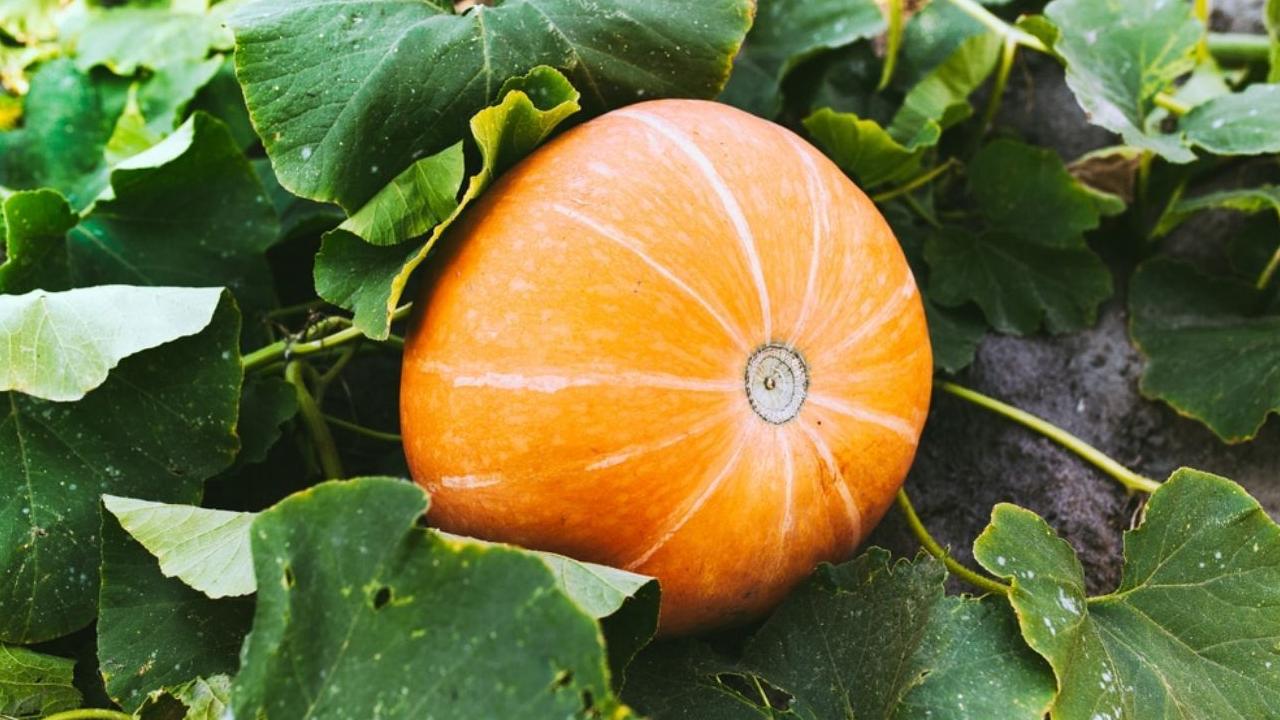
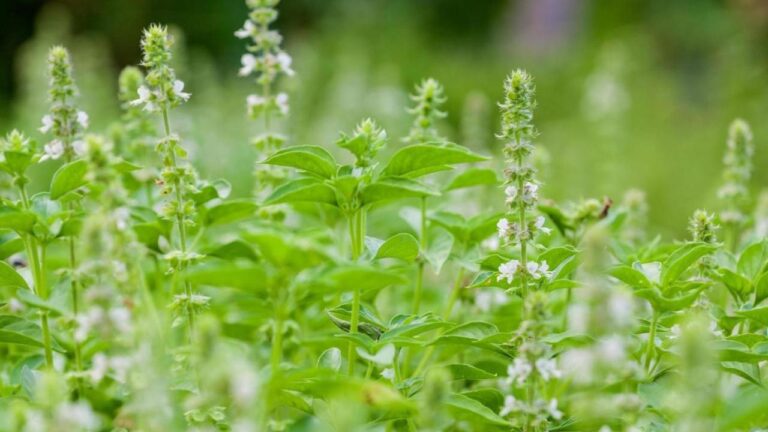

Leave a Comment